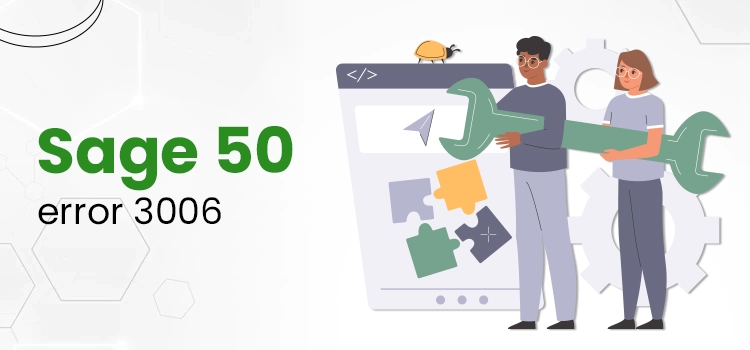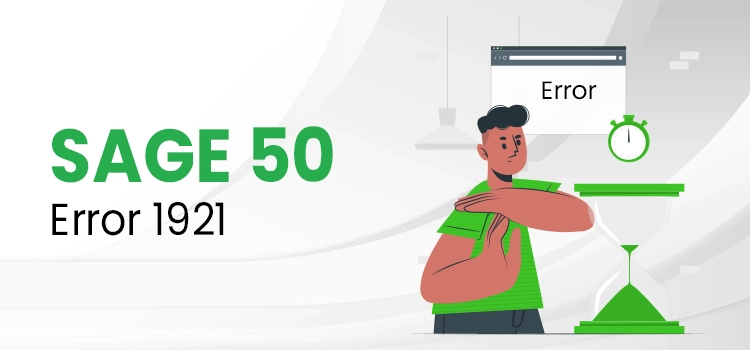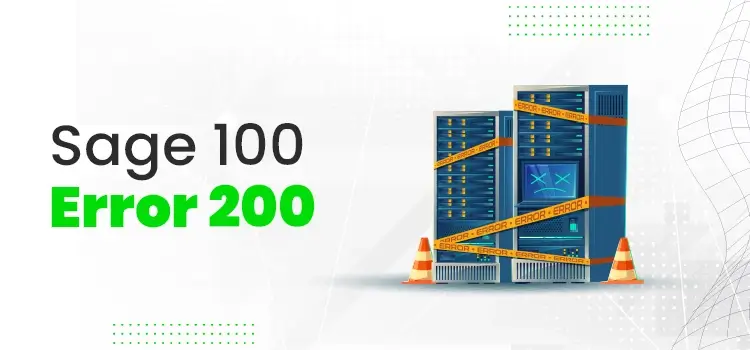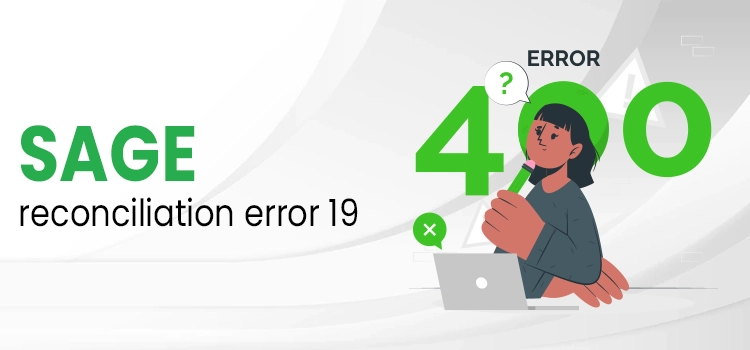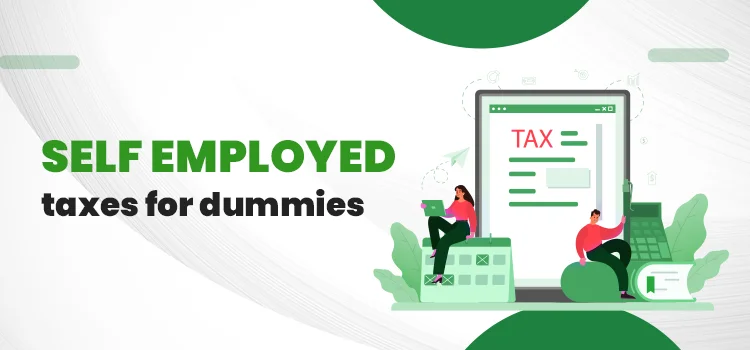
Taxation is an important aspect for anyone who is making a living on their own. Based on their employment source, different people have to follow different processes to file their taxes. While for the person with a job, taxation can be a bit easier as it can be auto-deducted from their income, or they can find information from multiple sources to pay them manually. However, when it comes to self employed taxes for dummies, it can be a bit complicated in the case of a self-employed person. Also, the amount of tax that a self-employed person pays can be a bit higher than a salaried person. But by how much? A self-employed who has been paying taxes previously already knows all these crucial details. However, a newly self-employed person, or you can say a dummy, has various queries and encounters numerous issues while filing taxes.
Thus, to clear all these queries, here we are going to provide all the details regarding self employed taxes for dummies person. Read the article further to get more insights on self-employed taxes for dummies.
Table of Contents
Self-Employment for Dummies: What do you mean by “Self-Employed.”
Before we provide you more information on Self employed taxes for dummies, you need to understand what exactly it is meant when someone uses the term “Self-Employed.” The term even comprises various categories of employed persons which you did not expect to be self-employed. Thus it is mandatory to know what do we mean by a “Self-Employed” person. A self-employee can be considered any person whose work isn’t considered under someone else payroll. Self-employment can include freelancing, off-hour employment jobs of a working professional for another company, or an e-commerce business. Whatever work you do, you need to show a proper record of your employment. After which, you need to pay taxes for it.
A self-employed person does not consider himself to be working under any other person. In fact, he has the option to provide employment to other people.
Self-Employment Taxes for Dummies
As a self-employed person, you need to pay taxes both as an employee and an employer. Thus, according to the regulations of Internal Revenue Services, a self-employed person needs to pay two taxes on himself and his employees under the Federal Insurance Contribution Act (FICA). These two taxes include Medicare and Social Security tax.
Calculation of Self-Employed Taxes for Dummies to give
The social security tax is around 6.2%, and Medicare includes 1.45% which makes a total of 7.65. Now as an employer, you need to pay taxes from your employee side also, which makes the self-employment taxes around 15.3% of your total earning. With this massive percentage, there are certain leverages to the self-employed person in the form of deductions which we are going to discuss further.
Independent Contractors
One category under which the majority of self-employed dummies fall is independent contractors. The term independent contract refers to the business arrangement between the person and the employer where they won’t be considered under full operations or any other terms and condition that applies to other regular employees. Other people who work in a shared economy, like listed vehicle owners under Uber, Ola, or Turo. Being an independent contractor has its own leverages and limitations. With leverages like no boundation of working time or following any schedule, there are some limitations like being responsible for their own taxes and others. To manage self employed taxes for dummies independent contractors, they can rely on Form 1099.
1.Form 1099 for Independent Contractors
Form 1099 is a document issued by various businesses to report the income of various independent contractors working for them. Based on the total income generated by any independent contractor, there are various versions of Form 1099, among which two types of forms are most commonly preferred by the people which we are going to list below:
2.Form 1099 MISC
This form is issued by the businesses to the contractor whose annual meaning exceeds 600 USD per year. The 1009 MISC mandatorily needs to be issued and received by the businesses and contractor, respectively if the income of the contractor is more than 600 USD. Also, it is recommended that the person avoid any discrepancies while filing taxes with Form 1099 MISC.
3.Form 1099K
This form is issued only when the total income generated within a year exceeds 20K USD and comprises more than 200 transactions. While filing with a revenue of more than 20K, you need to deduct the third-party charges.
4.Other versions of Form 1099 are listed below:
- 1099 NEC: After 1099K and 1099 MISC, the third option which can be used by independent contractors is 1099 NEC which can be utilized by the independent contractor without any limitation of minimum income or any other parameter.
- Form 1099 INT: This form is submitted for any interest which you have earned in a year. The minimum interest which you can report is USD 10.
- Form 1099 DIV: For anyone who has generated income through stocks or mutual funds in the form of dividends has to report their generated revenue through Form 1099 DIV.
- Form 1099-G: For unemployed persons who are utilizing government benefits need to report it through 1099-G.
- 1099-R: Any kind of payments received from retirement plans, pensions, annuities, profit-sharing programs, or IRAs need to report through this form.
All the income generated by any independent contractor is subject to self-employment tax. As already mentioned above, the tax rate for any self-employed person is around 15.3%. This includes both Social Security and Medicare. The given 15.3% can change every year.
In case any self employment taxes for dummies go over USD 1000 in taxes to the IRS, then they are advised to pay on a quarterly basis. However, in order to determine whether your annual returns will exceed USD 1000 or not, you need to check for the previous year’s taxes. Based on that, you can make Quarterly Tax payments.
Taxation for Self Employed
While independent contractors can use Form 1099, which can be issued by the business they are working for. However, this form cannot be utilized by the self-employed, who have multiple sources of income. This is where IRS Schedule C or Form 1040 form comes in use. It is a document provided by the IRS to various businesses in order to report losses and profits made by any business. Also, through the help of this form, businesses can claim various tax deductions.
To fill out Form 1040, you need to have all the Tax-Related details of your business, like your Tax ID number, social security number, and others. Apart from that, other details which need to be mentioned in the IRS Schedule C include tax credits, allowances & returns, services, Refunds, business expenses, and many others. All these details can be leveraged against the taxable income to lower the overall taxes.
Deductions in Various Self-Employment Taxes for Dummies
While filing taxes, various expenses can be mentioned, which can be leveraged in order to lower the whole taxes. Some of the tax deductions that can be used by the businesses are listed below:
1.Business Insurances Policies
All the insurance policies which are taken in order to protect your business can be mentioned in tax filing in order to leverage against the total taxable amount. Various business insurance policies that can be used as Tax Deductible are listed below:
- Professional Liability tax
- Cyber Liability Insurance
- Worker’s Compensation Insurance
- Commercial Auto Insurance
- Unemployment Insurance
- General Liability Insurance
- Health and Life Insurance
2.Cell Phones and Internet Charges
Internet and calls have become a basic necessity for every person. For businesses, there is a requirement for a swift internet connection and secured calling services in order to communicate. Thus, the expenses made on the Internet and Calling made by the business can be excluded while calculating the taxes.
3.Continued Education
For better career prospects, education is necessary. Also, in order to expand your business, you need to have full knowledge of your business expertise, which you can get through education. As the cost of education has no relation with the operations in order to run the business, you can rule out education charges in tax filing.
4.Travel Charges.
Various expenses made by you while traveling for business purposes. These include rental expenses, hotel accommodation, travel charges, and many other expenses. All these expenses can be excluded from being charged for taxes.
5.Home Office Tax Deduction
In case you have made your home your business workstation, then you can mention it in your tax deduction. The amount deductible is up to USD 5 per square foot with a maximum working space limit of around 300 square feet. The major benefit of this tax deduction is that even a single corner of your home that you have used in your business can be mentioned as part of your Home office tax deduction.
Wrapping It up
From the above discussion, we hope that you can easily understand how to file for taxes as a self-employed person. Based on the information mentioned above, you can look out for various tax deductions through which you can lower your overall taxes. Make sure to fill out Form 1040 or 1099 (based on the nature of your self-employment) carefully. Now, if you need any further assistance and additional support while filing for taxes, you can reach out to us through the number given below. You can also use the live chat option to connect with us instantly. Through that, you can get any information related to tax filing, irrespective of the fact whether you are a working employee or a self-employed person.
FAQs
Que 1. What is the difference between W2 and Form 1099 or 1040(IRS Schedule C)?
Ans. Form W2, 1099 & 1040 are tax filing document that differs on the basis of the nature of the employment of the person who is filing for taxes. While W2 is used by the salaries person, Form 1099 is available for independent contractors, and Form 1040 is for self-employed persons with multiple sources of income.
Que 2. What are various Tax deductions which a self-employed person can claim for?
Ans. Various other tax deductions are available for Self-employed taxpayers, like business insurance, travel charges, internet charges, and many others. Apart from that, various leverages can be utilized by any self-employed person. These leverages vary based on the nature of their business and the amount of tax that businesses have to pay. Some of these leverages, as per the taxation policies, are listed below:
- The estimated taxes comprises Social Security and Medicare taxes. The Medicare taxes that exceeds over 7.5% of the total income comes under the category of deductible taxes.
- You can put your income in the Health saving account in order to increase your tax deduction.
- Self-employed taxpayers need to keep track of all their business-related products, which can be further utilized for tax deductions.
- You can also contribute a part of your income to retirement plans in order to lower the taxable amount.
Other things to know regarding Self-Employed taxes for Dummies
Some other things which every self-employed taxpayer needs to keep in mind are:
- The maximum taxable income for social security taxes is USD 137,700.
- If your annual estimated tax amount exceeds USD 1000, then you need to pay Quarterly Taxes.
- Employment made by working in a Church exceeds USD 108. 28 is subject to be considered self-employment tax.
Ezra Smith is a subject matter specialist @accountings-age-50.net Being a prolific content expert with a significant amount of experience, his writings on top directory categories in the United States are getting recognition among customers across the Globe. In addition to being a well-known writer, Adam has expertise in SEO and SMO strategies.


